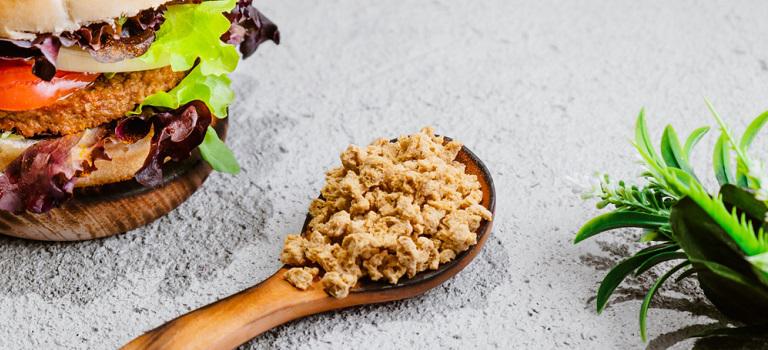


 Textured vegetable protein is most commonly used as a vegan meat alternative. Because its texture closely resembles meat, TVP can be used in similar ways that ground beef would be. Work it into a delicious chili recipe or use it as a meat replacement in homemade lasagna. Adding TVP to your plant-based recipes will boost protein and texture while also adding bulk to a meal.
Textured vegetable protein is most commonly used as a vegan meat alternative. Because its texture closely resembles meat, TVP can be used in similar ways that ground beef would be. Work it into a delicious chili recipe or use it as a meat replacement in homemade lasagna. Adding TVP to your plant-based recipes will boost protein and texture while also adding bulk to a meal.
 Aside from being used as a meat alternative and extender, textured vegetable protein is widely known for adding a significant protein boost to meals. Because of this, it's commonly added to health food bars, cereal and even sprinkled on salad to increase the nutritional contents of foods. When cooking with textured vegetable protein, we encourage you to get creative! Smoothies, sauce and even pancakes are all delicious recipes that you can work TVP into for an added protein boost.
Now that you know more about the many ways you can use textured vegetable protein, it's time to put that knowledge to the test. We've tested several different TVP-based recipes at Bob's Red Mill and found a few that we love. For a boost of inspiration, check out these 5 Satisfying Recipes That Use Textured Vegetable Protein. From burgers to breakfast sausage, we're confident they won't disappoint. From everyone at Bob's Red Mill, we hope you have a tasty food-filled day!
Know of another fun way to use textured vegetable protein? We'd love to hear more about how you work this plant-based ingredient into your homemade recipes. Let us know the many ways you cook with TVP in the comments below. We can't wait to hear from you!
Aside from being used as a meat alternative and extender, textured vegetable protein is widely known for adding a significant protein boost to meals. Because of this, it's commonly added to health food bars, cereal and even sprinkled on salad to increase the nutritional contents of foods. When cooking with textured vegetable protein, we encourage you to get creative! Smoothies, sauce and even pancakes are all delicious recipes that you can work TVP into for an added protein boost.
Now that you know more about the many ways you can use textured vegetable protein, it's time to put that knowledge to the test. We've tested several different TVP-based recipes at Bob's Red Mill and found a few that we love. For a boost of inspiration, check out these 5 Satisfying Recipes That Use Textured Vegetable Protein. From burgers to breakfast sausage, we're confident they won't disappoint. From everyone at Bob's Red Mill, we hope you have a tasty food-filled day!
Know of another fun way to use textured vegetable protein? We'd love to hear more about how you work this plant-based ingredient into your homemade recipes. Let us know the many ways you cook with TVP in the comments below. We can't wait to hear from you!